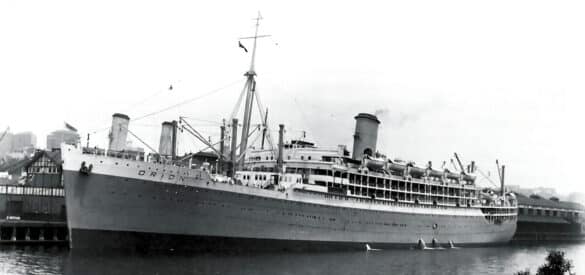Tens of thousands of people from Cyprus emigrated to Australia. A new book details their journey to becoming local citizens
Covering the journey taken by over 80,000 Cypriots to Australia, Professor Anastasios M Tamis takes readers on a century-long journey of migration, struggle, community and belonging in a foreign land in his new book The Children of Aphrodite: Cypriots in Australia. It recounts how life in Oceania was challenging for Cypriots searching for a better life and a struggle to maintain their identity while blending into their new home.
At the book’s recent launch in Nicosia, the author and others detailed the difficulties involved but also the strength needed to overcome shown by most Cypriots that migrated.
In addition to the hardships of migration, the book also details the lives of Cypriots in Australia and how they set up cultural organisations. Although the first Cypriots to migrate left the island in the late 19th century and early 20th, larger numbers arrived after the post-World War II period, as Cypriots were British subjects at the time.
Most Cypriots arriving at the time experienced something akin to the Ten-Pound Poms portrayed in a British series detailing lives of Britons that emigrated from the UK following the war, promised better lives in Australia including stunning homes and more wealth.
But in the series, as in life, this was far from the truth with the Brits having to face a new type of life as immigrants.

The book, however, details the added difficulty of Cypriots, both Greek and Turkish, who could not speak English, in addition to other racist policies such as the White Australia Policy. The policy was designed to exclude non-white races from coming to Australia.
Before the war, defending the policy Australian Prime Minister John Curtin was quoted as saying: “This country shall remain forever the home of the descendants of those people who came here in peace in order to establish in the South Seas an outpost of the British race.”
As a result, many Cypriots had to pass English tests or even be Christian to be admitted into the country. Some Turkish Cypriots managed to migrate under the policy, but only those that spoke English.
“Migration was extremely difficult for many Turkish Cypriots because of the implementation of the White Australia Policy, which aimed to disallow any non-European migration into Australia,” the book says.
In the late 1940s, only 66 Turkish Cypriots migrated to Australia, which marked the start of their arrival in the country.
Despite being the right religion, Greek Cypriots, however, did not always have it much easier once they arrived, taking jobs as day labourers in mines, or in far corners of Australia, Tamis said describing the lives of the Cypriots who spread out across the country establishing themselves.
“Several Cypriots had found it difficult to adjust to the severe and demanding working conditions as unskilled labourers in Australian smelters, the sugarcane plantations, and other industrial manufacturing companies,” the book says.
Some of these people eventually returned to Cyprus, but the book details the thriving immigrant spirit as well, conveying stories of Cypriots that toiled but eventually established themselves.

One man quoted in the book, Adamos Kaoullas, recounts his tale of poverty arriving in Australia almost penniless with one Turkish Cypriot in 1947.
Starting out as a factory employee, Kaoullas managed to open his own businesses, bring his family over and build a life in Australia.
“I feel both content and happy because I brought to Australia all my siblings, offering new opportunities and better prospects to them and their children. This has been my most significant accomplishment, as well as my involvement in the communal affairs of the Cypriots,” he said.
Throughout its chapters, the book details how Cypriots established themselves in all the Australian states and territories, while also describing the hardships faced by the immigrants in being able to establish their own communities.
The book then details how Cypriots, once established, went on to become Australian citizens and part of the society, while also describing the significant influence the community has in the modern-day state.
In one of the book’s later chapters, readers are introduced to some accomplishments of Australian-Cypriots over the years.
In a weighty but compelling tome, the book takes the reader on a journey through the 20th century and the struggle to establish a community so far from home.
The Children of Aphrodite: Cypriots in Australia will be available in bookstores in Cyprus, and was launched as part of the 50th anniversary of Cyprus-Australia relations





